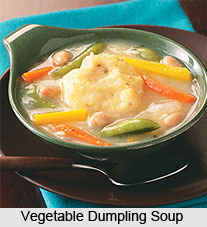 Mongolian influence on Indian food can be seen in a great degree in various parts of the country. India because of its strategic geographical location was always visited by various neighbouring areas. Moreover, the cuisine of the Indian sub continent has been geographically and culturally influenced. North Eastern range of India owes its location near the countries like China and Mongolia. An immense influence on the food of that region is seen; most prominently Mongolian Influence on Indian Food is exhibited in the states of Mizoram, Nagaland, Manipur, Assam, Meghalaya as well as Aruchanal Pradesh.
Mongolian influence on Indian food can be seen in a great degree in various parts of the country. India because of its strategic geographical location was always visited by various neighbouring areas. Moreover, the cuisine of the Indian sub continent has been geographically and culturally influenced. North Eastern range of India owes its location near the countries like China and Mongolia. An immense influence on the food of that region is seen; most prominently Mongolian Influence on Indian Food is exhibited in the states of Mizoram, Nagaland, Manipur, Assam, Meghalaya as well as Aruchanal Pradesh.
Mongolian Invasion
The Mongols invaded India in the 13th Century. Mongol Empire launched several invasions into the Indian subcontinent from 1221 to 1327 but most of the campaigns proved to be unsuccessful. Though repeated failure, Mongols resided in India for some time and contributed to the Indian Food.
Influence of Mongol on Indian Food
Mongolian Influence on Indian Food brought changes in the cooking style and introduced several ingredients for the Indian Kitchen. Rice is consumed as a staple food by most of the people residing in the eastern part of India. Mongolian Influence on Indian Food initiated the production of rice and popularised its intake as a main food item. Other main foods of the Mongolian cuisine which have gained recognition in the Indian Kitchen include green vegetables and fruits that are used in abundance.
The traditional Mongolian Cuisine primarily consists of dairy products and meat. Mongolians either cook the meat or use it as ingredient for soups or dumplings. The conception of making a variety of beverages and dishes from milk and cream are received from the Mongolians.
Mongolian Influence on Indian Food basically introduced the simplistic ways. This influence can be seen in the north eastern part of the country where, food is prepared not in an elaborate method and neither much ingredients are used. Steaming and frying are popular methods of cooking in this region.
The people of the eastern India have developed the liking for sweets and desserts as a result of Mongolian influence. Mustard oil is another popular ingredient that has taken over prominence in the Indian Kitchen after the Mongolian invasion. Other vegetable oils are also used along with spices and ingredients such as mustard seeds and paste, chillies, paanch phoran (a mix of five spices - white cumin seeds, onion seeds, mustard seeds, fennel seeds and fenugreek seeds). Yoghurt, coconut, maize and gram flour are also common ingredients.




















